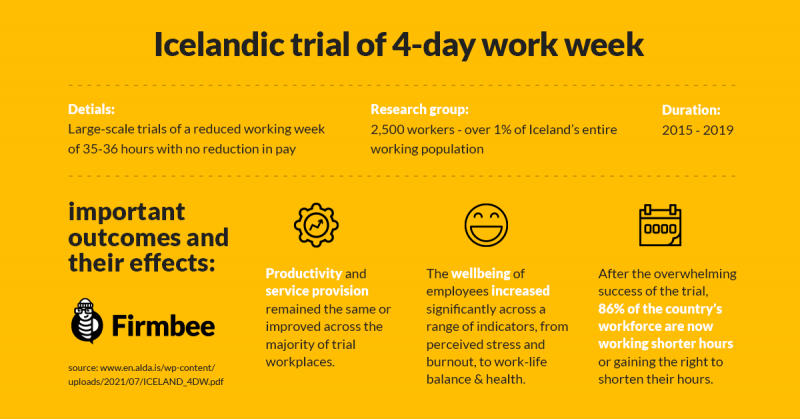
The concept of a four-day workweek has been gaining serious traction in recent years, moving from progressive fantasy to legitimate policy discussion. From Iceland’s groundbreaking nationwide trials to high-profile experiments at companies like Kickstarter and Microsoft Japan, the results have been eye-opening: happier employees, increased productivity, and in some cases, even higher profits – all while working 20% fewer hours. But here in America, where hustle culture runs deep and “quiet quitting” became a controversial buzzword, can this radical idea actually take root? Or is it destined to remain another perk for the privileged few in tech and creative fields?

Let’s start with the cold, hard facts. The traditional five-day, 40-hour workweek isn’t some divinely ordained schedule – it’s a relic of 1920s labor reforms. Henry Ford standardized it nearly a century ago, and somehow we’ve been stuck with it ever since, despite massive changes in how we work and live. Today, with burnout at epidemic levels and technology enabling work from anywhere at any time, the case for rethinking this outdated model has never been stronger.
The data from recent trials is compelling. When Iceland conducted what became the world’s largest four-day workweek pilot between 2015 and 2019 involving over 2,500 workers (about 1% of their workforce), the results were nothing short of revolutionary. Workers reported significantly reduced stress and burnout while maintaining or even improving productivity. Doctors’ appointments and errands that used to require time off were suddenly handled on the extra weekday off. Parents could spend more time with their children. The trial was so successful that now 86% of Iceland’s workforce has either moved to shorter hours or gained the right to reduce their working time.

Similar experiments have produced equally promising results. Microsoft Japan tested a four-day week in 2019 and reported a staggering 40% boost in productivity. A UK pilot program in 2022 involving 61 companies found that revenue actually rose by 1.4% on average while employees worked fewer hours. Buffer, the social media management company, implemented a four-day week permanently after their trial showed improved employee well-being with no drop in output.
So how does working less lead to getting more done? The answer lies in how we actually spend our time at work. Numerous studies have shown that the average office worker is only productive for about 3 hours a day. The rest is lost to pointless meetings, constant email checking, and what psychologists call “cognitive switching” – the mental toll of constantly jumping between tasks. When employees know they have less time to complete their work, they become ruthlessly efficient at cutting out the fat. Meetings become shorter and more focused. Distractions are minimized. Work expands to fill the time allotted, so less time often means more concentrated effort.
The mental health benefits are equally compelling. In America, where 55% of workers report feeling burned out according to Gallup polls, the impact could be transformative. Chronic workplace stress has been linked to everything from heart disease to depression to lower life expectancy. An extra day off provides real time for recovery – not just catching up on sleep, but actually engaging in hobbies, spending time with family, or simply decompressing. Imagine eliminating that Sunday night dread before Monday morning. For many workers in the trials, that became reality.
From a business perspective, the four-day week is proving to be an unexpected weapon in the war for talent. In today’s tight labor market, companies are desperate for ways to attract and retain skilled workers. While unlimited PTO sounds nice in theory, in practice many employees don’t take advantage for fear of falling behind. A guaranteed three-day weekend, however, is tangible and game-changing. A recent survey found that 92% of workers would prefer a four-day week over other perks. For businesses struggling with high turnover, this could be a more cost-effective solution than constantly raising salaries.
But before we declare the five-day workweek dead, let’s pump the brakes. The reality is far more complicated, especially here in the United States where work culture is deeply ingrained in our national identity. While the concept shows tremendous promise for certain types of work, significant barriers remain that could prevent widespread adoption.
The most obvious challenge comes in customer-facing industries. Hospitals can’t simply close on Fridays. Restaurants need staff when customers want to dine. Emergency services don’t get to clock out early. For these sectors, implementing a four-day week would require creative solutions like staggered schedules (not everyone gets Friday off) or hiring more staff (which cuts into potential cost savings). Some businesses might turn to automation, but that brings its own set of challenges around job displacement and customer experience.
Then there’s the pay problem. Most trials have maintained salaries while reducing hours – but will that last if the model goes mainstream? There’s legitimate concern that companies might use this as an excuse to cut wages, particularly for hourly workers who could see their shifts (and paychecks) reduced. Small businesses already operating on thin margins might struggle to match what large corporations can offer. The risk is that this becomes yet another perk for privileged knowledge workers while blue-collar employees get left behind.
Perhaps the biggest obstacle is cultural. America has a deeply ingrained work ethic that often borders on the pathological. We brag about being busy. We wear sleep deprivation like a badge of honor. We’ve turned “hustle culture” into a multi-billion dollar industry of productivity hacks and side gigs. In Japan, they have a word for death by overwork – “karoshi.” In America, we call it dedication. Changing these deep-seated attitudes won’t happen overnight.
The equity issue can’t be ignored either. The benefits of a four-day week naturally accrue most to knowledge workers in tech, creative fields, and other output-based roles. For the millions of Americans working in retail, manufacturing, healthcare, and other hands-on jobs, the transition would be far more complicated. Without careful planning and policy safeguards, the four-day movement risks becoming another wedge deepening the divide between white-collar and blue-collar workers.
So where does this leave us? The four-day workweek isn’t a magic bullet that will solve all our workplace woes, but it’s an important experiment in rethinking how we structure our working lives. The evidence suggests that for certain types of work and certain types of companies, it can deliver real benefits for both employees and employers. But implementing it widely will require creative solutions to the very real challenges it presents.
Some companies are already exploring hybrid approaches. “Summer Fridays” (half-days during warmer months) have become popular in some industries. Others are experimenting with results-only work environments (ROWE) where employees are evaluated on output rather than hours logged. These compromises might serve as stepping stones to more radical changes down the road.
Policy will play a crucial role too. While there’s no serious push for a four-day workweek at the federal level yet, some states like California are exploring pilot programs. Unions could be powerful advocates for negotiating shorter hours. The key will be ensuring that any transition doesn’t come at the expense of worker pay or benefits.
The most promising path forward might be a gradual, sector-by-sector adoption. Tech companies and creative agencies will likely lead the charge, followed by other office-based industries. Customer-facing businesses will need to develop tailored solutions that maintain service levels. For some jobs, like emergency services, the traditional five-day schedule may persist for the foreseeable future.
What’s clear is that the genie is out of the bottle. The pandemic proved that many of our assumptions about work were outdated. Employees have tasted flexibility and aren’t eager to give it up. Companies that adapt to this new reality will have a competitive edge in attracting and retaining talent. Those that cling to outdated models risk being left behind.
The four-day workweek represents more than just an extra day off – it’s a fundamental reimagining of the relationship between work and life. In an era of rampant burnout and unprecedented workplace transformation, that reimagining might be exactly what we need. But making it work at scale will require creativity, flexibility, and a willingness to challenge deeply held beliefs about what work should look like.
As we move forward, the conversation needs to shift from “Is this possible?” to “How can we make this work for as many people as possible?” The answers won’t be simple, but the potential rewards – happier, healthier, more productive workers – make the effort worthwhile. The future of work isn’t about working less for the sake of it, but about working smarter and living better. And that’s a future worth fighting for.





